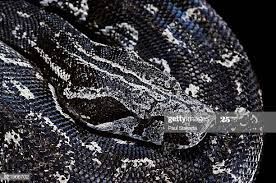ANIMAL: Argentine Boa Boa occidentalis Type of Animal: Boa/Python Habitat: Tropical/subtropical forests (both wet & dry, both closed & open), forest clearings/edges, woodlands, semidesert, scrub forest, grasslands, rocky slopes, savanna, swamps, thorn scrub, plains, foothills, intermontane valleys, wetlands, cactus stands, shrubland Location(s): Argentina & Paraguay Appearance: Females bigger than males, dark brown, black, or gray w/ pale gold, white or multitude of light & dark patterns, gray belly w/ dark spots, some specimens have varying degrees of burnt orange to red (more prominent in captivity), young have paler dots Food/Diet: Rats, mice, rabbits, squirrels, agoutis, capybaras, nutrias, guinea pigs, ocelots/other small felines, amphibians, bats, lizards (including larger species), birds (up to size of turkeys), young tortoises, pacas, cavies, coatis, monkeys, young crocodilians, opossums, deer, pigs, other snakes (including young anacondas & smaller members of own species), eggs Status in Wild: Stable Conservation: Breeding in zoos, herpetoculture, & wildlife centers Lifestyle: Solitary Additional Info: Called: Male Female Young-Snakelet Group-Solitary Weight: Male-15 lbs Female-30 lbs Young-6 lbs Gestation: 4-8 months Life Span: 20-30 years Body Length: Male-6 ft Female-10 ft Young-2.5 ft Tail Length: Male-2.5 ft Female-2 ft Main predators of adults are jaguars, crocodilians, & anacondas. Young preyed on by many snakes (including larger members of own species), predatory birds, carnivorous/omnivorous mammals, predatory lizards, & predatory turtles. Like other boas, females give birth to live young. Kills prey by constricting & swallowing whole. Sexually mature at 2-3 years. They’re ambush predators. They’re hunted for skin, meat, & pet trade. Farmers kill them because they eat poultry, & sometimes pigs. They spend lots of time on the ground & in the trees. They breed from late fall to early spring. Fun Fact(s): These snakes tend to be fairly docile unless shedding. Younger ones nippier than adults. It can take them up to 6 days to digest a meal. Loosely hinged jaws can stretch far apart, enabling it to eat prey bigger than itself. They’re valuable in that they eat lots of small & medium-sized mammals.
